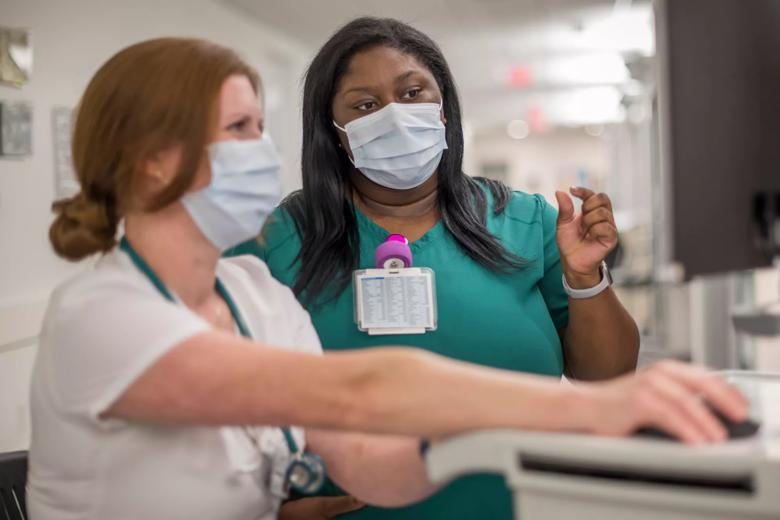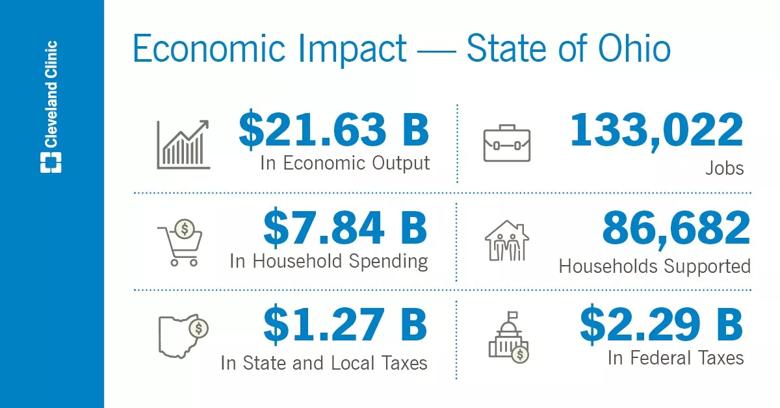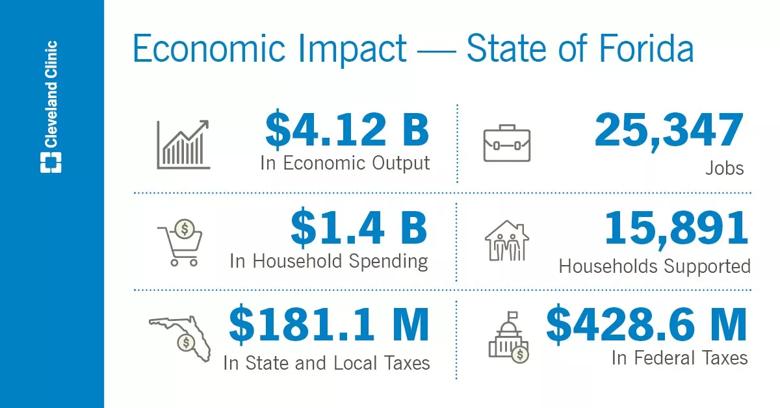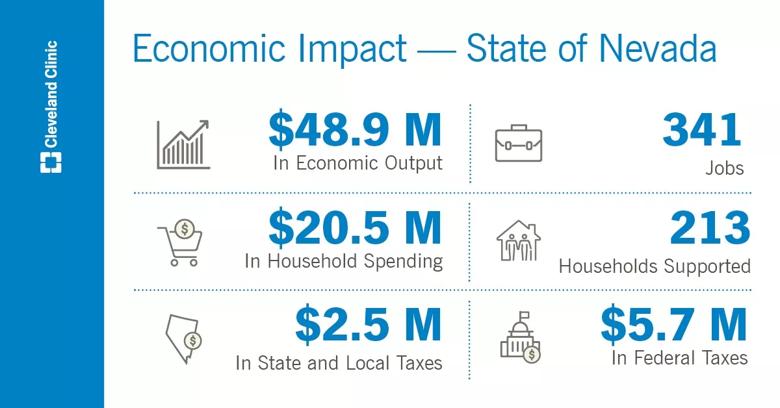Economic activity supports families, neighborhoods and community life in Ohio, Florida and Nevada
Content is property of Cleveland Clinic and for news media use only.

Cleveland Clinic contributed $21.6 billion to Ohio’s economy in 2019, according to the health system’s most recent economic and fiscal impact report.
“Cleveland Clinic is an economic engine in Northeast Ohio and the State of Ohio,” said Tom Mihaljevic, M.D., Cleveland Clinic CEO and President. “As the largest employer in the state and a major purchaser of goods and services, Cleveland Clinic generates tax revenue for government at every level. Our economic activity supports families, neighborhoods and community life.”
In 2019, more than 133,000 jobs generating approximately $8.8 billion in wages and earnings were directly and indirectly attributed to Cleveland Clinic.
The health system’s economic activity was accountable for $2.3 billion in federal income taxes and $1.3 billion in total state and local taxes paid by employees and vendors.
Households supported by the Cleveland Clinic health system spent $7.8 billion on goods and services, and the organization purchased $2.3 billion of goods and services from Ohio businesses.
“Caring for the community is a priority at Cleveland Clinic. As we celebrate our 100th anniversary, we are proud of our impact on the physical and economic health of our neighborhoods and embrace our role as an anchor institution,” said Dr. Mihaljevic.
Cleveland Clinic’s goal is to create the healthiest community today and for future generations through actions and programs to heal, hire and invest for the future. The health of every individual affects the broader community.
The health system invests in local businesses through the purchase of goods and services. That investment helps cities and neighborhoods thrive through tax revenues that support critical health services and infrastructure.
Beyond 2019, Cleveland Clinic has continued to serve as a stabilizing economic influence. The health system took steps during the COVID-19 pandemic to preserve jobs, which helped support caregivers, their families and the communities where they live.
Cleveland Clinic’s economic impact isn’t limited to Ohio. In 2019, Cleveland Clinic directly and indirectly supported $34.5 billion of economic activity in the United States through its ongoing operations and construction activities. Cleveland Clinic directly supported an estimated 72,045 jobs in Ohio, Florida and Nevada.

Clinical Technician Ayanna Lewis talks to Amy Flowers-Surovi, RN. (Courtesy: Cleveland Clinic)

Herbert Allen packs folded laundry for Cleveland Clinic at Evergreen Cooperative Laundry. (Courtesy: Cleveland Clinic)

Case Western Reserve University and Cleveland Clinic opened the Health Education Campus in 2019.
For every direct Cleveland Clinic job, approximately 1.7 additional jobs across the country can be attributed to the health system. These additional, indirect jobs include food and cleaning services, utilities and IT positions, and medical supply vendors. An estimated $13.3 billion of annual labor income, including benefits, was associated with the total jobs. These jobs and associated earnings sustained 124,831 U.S. households, which spent approximately $11.2 billion purchasing goods and services.
Cleveland Clinic’s operating and construction activities resulted in the generation of $1.9 billion of state and local taxes and $3.5 billion of federal taxes in the U.S. in 2019.
Additionally, patients visiting Cleveland Clinic spent an estimated $309 million in Ohio, Florida and Nevada.
Every three years, Cleveland Clinic produces an economic impact report, which is a comprehensive look at how the health system affects the economy of a region. This year’s report is based on 2019 data. The previous report, based on 2016 data, showed that Cleveland Clinic added to the Ohio economy by $17.8 billion.
The report is the result of an economic analysis completed by Silverlode Consulting utilizing IMPLAN, a widely used economic impact modeling system.
The full report is available on ClevelandClinic.org.




Cleveland Clinic is a nonprofit multispecialty academic medical center that integrates clinical and hospital care with research and education. Located in Cleveland, Ohio, it was founded in 1921 by four renowned physicians with a vision of providing outstanding patient care based upon the principles of cooperation, compassion and innovation. Cleveland Clinic has pioneered many medical breakthroughs, including coronary artery bypass surgery and the first face transplant in the United States. Cleveland Clinic is consistently recognized in the U.S. and throughout the world for its expertise and care. Among Cleveland Clinic’s 82,600 employees worldwide are more than 5,786 salaried physicians and researchers, and 20,700 registered nurses and advanced practice providers, representing 140 medical specialties and subspecialties. Cleveland Clinic is a 6,728-bed health system that includes a 173-acre main campus near downtown Cleveland, 23 hospitals, 280 outpatient facilities, including locations in northeast Ohio; Florida; Las Vegas, Nevada; Toronto, Canada; Abu Dhabi, UAE; and London, England. In 2024, there were 15.7 million outpatient encounters, 333,000 hospital admissions and observations, and 320,000 surgeries and procedures throughout Cleveland Clinic’s health system. Patients came for treatment from every state and 112 countries. Visit us at clevelandclinic.org. Follow us at x.com/CleClinicNews. News and resources are available at newsroom.clevelandclinic.org.
Editor’s Note: Cleveland Clinic News Service is available to provide broadcast-quality interviews and B-roll upon request.